 The venerable Ned Denison, the Swim Ireland National Open Water Committee chairperson who completed a circumnavigation around Manhattan Island in 2007, was recently named to help select the swimmers for the 2010 Manhattan Island Marathon Swim, one of the world's most popular marathon swims.
The venerable Ned Denison, the Swim Ireland National Open Water Committee chairperson who completed a circumnavigation around Manhattan Island in 2007, was recently named to help select the swimmers for the 2010 Manhattan Island Marathon Swim, one of the world's most popular marathon swims.Marathon swimmers around the world have frequently wanted to know what goes into the selection of swimmers to the Manhattan Island Marathon Swim.
 Ned shared his insights and perspective with the global marathon swimming community of the inside selection process of the Manhattan Island Marathon Swim:
Ned shared his insights and perspective with the global marathon swimming community of the inside selection process of the Manhattan Island Marathon Swim:"For anyone unfamiliar with the MIMS entry process, it entails [up to] several hours of non-swimming preparation: pulling together information about one’s swimming background and training, detailed entry on the website and eventual uploading of biography, swim history/witness statements, extensive medical check-up and certificate, charity activities, names of crew, anticipated swim workouts and the dreaded essay: "Why I want to swim around Manhattan." The best prepared applicants had their website sections 95% completed well before enrolment day.
[On] the appointed day, the entries opened and the scramble began. Within fifteen minutes, 25 entries had been received. In one hour, when they decided to turn off the enrollment due too much interest, 34 entries had been collected. By the end of the day 15 solo entries had been accepted.
Every solo swimmer with a fully completed application and a recent record of cold water marathon swimming was accepted. Interesting to note – being fully prepared gave applicants for MIMS 2010 a guaranteed place. This was only evident in hindsight and for sure some year will not happen. In addition, these 15, by coincidence, met the diversity criteria: alumni, newcomers, women and non-Americans.
Three days later, the MIMS selection committee met – mostly by global phone conference call. We discussed the swimmers who either didn’t fully complete the application (example missing medical certificate) or didn’t have recent cold water marathon swimming experience. The committee ruled out any applicants who missed the deadline. This was done simply, in our judgement, to be fair to the applicants who were on time. The committee started down the list in the order of applications completed and if not completed, received.
The committee ruled out any swimmers who did not have substantially complete applications. This was easy – we all had bad experiences chasing swimmers in the past for money, medicals, crew names, etc. and we were too old and too smart to go down that road again. Is that fair? You only need to be a member of one committee and do one bit of chasing and you’ll agree with us on this one! It also showed a lack of desire or commitment – both of which are needed by the swimmer over the long winter training and long trip around the island.
We divided the remaining swimmers into two groups: the "almost complete applications" were reviewed in the order accepted and the "less complete applications" were reviewed as a group. For the first swimmer on the "almost complete application" list there were some questions – the applicant’s history looked a bit odd: a blazing English Channel time, no real competitive swim background and a very short ramp up to marathon swimming. I knew him personally, once lost a swim against him and was able to verify his short channel ramp-up. The committee accepted him as solo swimmer number 16.
We then looked at the remaining ("less complete") applications as a group – no more preference on order received. A few were quickly accepted – mostly based on recent cold water marathon swimming experience. Some were ruled out because they didn’t have it. Is that fair? For safety reasons, we want every swimmer to complete the swim – and in good health. We were just not prepared to put a swimmer in the water who had never done a 5 mile open water swim or completed a long relay.
Then we discussed the last group chasing a limited number of slots. The first mile of MIMS can be a tough tide to swim against and the current switch at Hell’s Gate must be beat, so the organisers have established cut-off times. A few were eliminated on speed considerations. In the end, we selected the last entrants and named a three-swimmer waitlist. How were the last ones entrants selected? A few of the local New York swimmers had proven steady progression over the years, a few very compelling biographies/essays and a few committee members made a pitch for an individual swimmer. We discussed and agreed a list – this is the result of any committee.
No doubt the committee turned down some great swimmers. No doubt a different committee would have had a slightly different list. No doubt, we will upset a few people - it was not the intention. The committee was actually lucky this year – we could easily explain why we chose and didn’t choose. As the newest member of the committee, I was volunteered to write up my experiences to help demystify the selection process. Some year in the future, 50 well-qualified swimmers may fully complete their applications on time and the committee will not be able to have the same kind of explanation – we were just lucky for 2010!
I enjoyed reviewing the swimmer’s applications and the committee discussion. I learned several things about setting up a comprehensive process to give a selection committee the best chance to end up with the most experienced, most prepared and most committed swimmers to compete in one of the world’s most compelling open water marathon races.
So here is the secret to competing in MIMS in the future. Build up your cold water marathon swimming experience and put in the time to 100% complete your application. The NYC Swim staff and committee members are also available to advise on the process through the year. Finally, be quick on the entry and you will get a shot."
If you do not know Ned, this is what he does in the water: Ned's solo swim in the Santa Barbara Channel in California can be seen here:
Copyright © 2009 by World Open Water Swimming Association



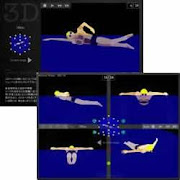



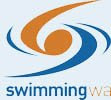
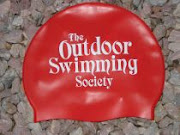

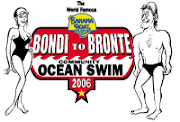


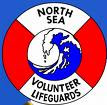
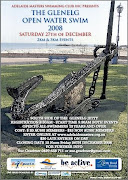





No comments:
Post a Comment